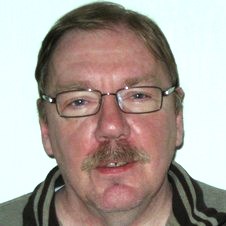Validation and Reconstruction of Impedance Data - Comparison Between the Measurement Model- and the ZHIT Algorithm
Dr. Werner Strunz
Zahner elektrik, Kronach, GermanyOver the last decades, Electrochemical Impedance Spectroscopy (EIS) has been well established as an analytical tool for the investigation of many systems of theoretical - as well as of technical relevance. The broad applicability of EIS derives from the fact that the “time” scale spans from about 10-5 to 107 Hz and the impedance range from about 10-6 to 1012. Considering these huge ranges, it is not surprising that EIS plays a dominant role in technical relevant systems like batteries, fuel cells, solar cells or coated metals.
Regarding these systems, one big disadvantage arises from the fact that they are investigated while the “specific force” may be applied, i.e. battery systems are usually measured under charging/discharging conditions, solar cells under illumination and coated metals while they are taking up an electrolyte solution.
All these situations may lead to systems which change their state during the measurement. This is a radical violation of any type of measurement because all measurements must be performed at a system which must not change at all during the measurement. Otherwise - and since any measured data point requires a particular time - one measures different systems at the beginning and at the end of the measuring process. This is also true regarding EIS.
In general, the evaluation of impedance spectra may be complicated by different detrimental contributions. Depending on the system, typical error contributions may be present. Mutual induction, parasitic reactances and electromagnetic interference are typical representatives of this type. These complications are mainly attributed to “simple” artifacts but must be detected and corrected during the evaluation process.
However, a significant complication which may not reveal itself in a spectrum arises from the large time scale of EIS: due to the large scale in time/frequency, the time required to measure a data point increases dramatically when going from high to low frequencies. This may lead to the situation of a system changing during the measurement.
Comparing for instance time domain techniques with EIS, the latter offers an unique feature which allows a consistency check of a measured data set: while in time domain any data point is a real valued point, an EIS data point is a complex valued point, i.e. consists of a real and an imaginary part which are not independent from each other. Considering this property, the real part of a complex number can be calculated from the imaginary part and vice versa (Kramers Kronig Integral Transform (KKIT).
As a consistency check, two relevant algorithms are compared which enable the reliable detection of artifacts within an impedance spectrum. The first algorithm - the so-called Measurement Model - validates a spectrum, modulating the recorded spectrum by a sum of exponential functions which fulfills the KKIT conditions.
The other algorithm - known in literature as ZHIT algorithm - enables the detection of artefacts too. Moreover, the ZHIT enables the possibility to reconstruct causal spectra from drift affected data. This is made possible because the Z-HIT is a true descendant of the KKIT. This involves an integral-term which leads to the situation that most of the drift affected data points (present in the low frequency) can be calculated from the high frequency data points, because these data are commonly not affected by drift effects.
Short biography:
 Dr. Werner Strunz studied chemistry at the University of Heidelberg and got his PhD in 1991 on the area of high conductive coordination polymers. From 1992 to 1993 he worked at the company Sika Chemie GmbH in area of corrosion protection and development of relaxation voltammetry. And from 1989 to 1999 he taught chemistry for school students. Since 1999 he has been working for the company Zahner-elektrik GmbH & Co KG as a system developer and also as scientific public relation of Zahner.
Dr. Werner Strunz studied chemistry at the University of Heidelberg and got his PhD in 1991 on the area of high conductive coordination polymers. From 1992 to 1993 he worked at the company Sika Chemie GmbH in area of corrosion protection and development of relaxation voltammetry. And from 1989 to 1999 he taught chemistry for school students. Since 1999 he has been working for the company Zahner-elektrik GmbH & Co KG as a system developer and also as scientific public relation of Zahner.

